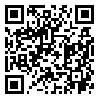BibTeX | RIS | EndNote | Medlars | ProCite | Reference Manager | RefWorks
Send citation to:
URL: http://refahj.uswr.ac.ir/article-1-1908-en.html
The first year of community based addiction prevention program in neighborhood areas was full of experiences. In this article, the -author tried to explain one of the best-known participatory practices in porto Alergre in south of Brazil, and his own experiences in four neighborhood areas known as Safaieh, HassanAbad, Naiem Abad, MaryamAbad and a large rural area named NasrAbad in Yazd province, center of Iran. In these experiences, the author found five different participatory models. The role of community health worker as a government agent, non-governmental organizations, community leaders & community facilitators were analyzed and five different lessons learnt from these five different experiences. Lessons that lead the author to a unique models, that could be used as a participatory model in neighborhood areas, workplaces, schools & families. In this model, named Living Homes, the health promotion road starts with facilitators as the core component of this model, construct the participation of the community members round their traditional culture and leads to community based organizations toward community movement against drug abuse.
Received: 2015/08/26 | Accepted: 2015/08/26 | Published: 2015/08/26
| Rights and permissions | |
 |
This work is licensed under a Creative Commons Attribution-NonCommercial 4.0 International License. |





